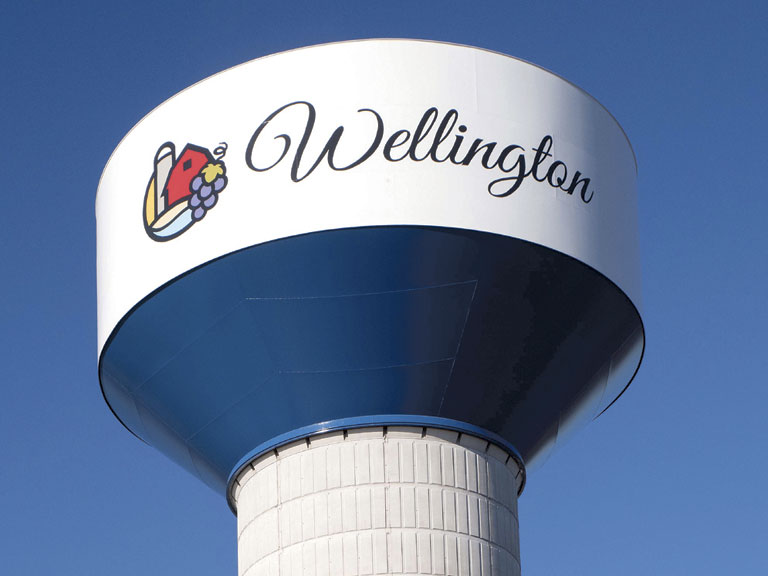County News
Big plans

Meeting reveals recommendations for County waterworks
Late in 2022, a project attempting to make sense of the County’s fragmented and disparate waterworks got rolling. Last week, the team tasked with this job returned with its recommendations.
The recommendation is to do nothing at four of the County’s six waterworks systems. At Peat’s Point, the team suggests that the municipality dig wells for each of the 19 households to extricate the municipality from this tiny, expensive, and burdensome water system.
In Wellington, Bloomfield and Picton, the recommendation is bigger. Much bigger. Here, the proposal is to build a large water treatment plant (larger than is currently in the planning stages) in Wellington, run a new intake pipe into Lake Ontario, and dig a 20-kilometre pipeline from this new plant through Bloomfield to Picton.
The estimated cost: $105 million. Less the amount ($23.6 million) it has already budgeted for a smaller plant in Wellington. A risk analysis conducted by the team allows, however, that the combined project may reach $200 million. This is in addition to the $100 million expansion to Wellington’s waterworks already underway.
The regional plan team reasons that building one system to serve the three communities will be less expensive than augmenting and reconstructing independent water systems in Picton, Bloomfield and Wellington. It anticipates lower operating and maintenance costs on one large system compared to three smaller ones.
The other chief benefit is that this plan eliminates the risks associated with drawing water from Picton Bay. It is a shallow and active bay— not ideal for a drinking water source, though it has served this role for many decades.
The entire plan relies, however, on a dramatic influx of humans arriving to live in these three communities. The plan anticipates a nearly sixfold increase in Picton and Bloomfield’s population— from 5,769 currently to 32,600 people someday in the future. Wellington must grow from a village of 2,248 to become a town of 14,500 souls. If they don’t come, the plan doesn’t work.
The planning timeline, however, is key to understanding how a population that hasn’t grown measurably in 130 years might suddenly explode many-fold. And keep exploding. To get there, the plan uses a 75-year time horizon (a timeframe only children born today may know was prescient or fanciful.)
The plan contends that it is much cheaper in the long run—say 75 years—to construct oversized infrastructure today than to come back and expand it in, say, 25 years or 30 years.
However, overhanging this plan is the thorny question of who will pay for all this extra capacity, which may not be used for generations.
The plan relies entirely on a massive surge in new homebuilding and a sharp and steady increase in population. There is no margin for error in these assumptions.
The plan anticipates the bulk of the cost will be recovered through development and connection charges. The expenditures, however, must be made in the next five to ten years according to the plan. Existing waterworks customers will have to underwrite this massive investment—until the wave of population arrives
Municipal waterworks users must pay now and hope the plan works.
The municipality may get some developers to pay some development charges upfront, but as is evident in Wellington, such agreements cover only a portion of the total cost. Further, the Wellington experience shows that extracting such payments from developers can prove elusive.
Taken together, the expansion of waterworks in Picton and Wellington represents the largest undertaking in the history of this community. Much rides on the assumptions that drive it.
PEATS POINT
It costs the waterworks utility about $160,000 yearly to manage the well that provides 19 homes at Peats Point with water—not including overhead costs. That works out to more than $8,500 per home per year—subsidized by all other water bill payers in the County. The regional plan proposes digging each of these homes a well— and then transferring ownership to the property owners. In doing so, the County can extricate the utility from perhaps the most expensive water system in Canada.
The estimated cost to dig each Peats Point home a well is about $1.2 million. As such it will take about 7.5 years to get the County out of the water business at Peats Point.
Alternate facts
The one-page handout provided to residents who attended the Regional Water Plan meeting in Wellington last week outlined the reasoning for the major expansion to the County’s waterworks infrastructure. It noted that a significant increase in housing supply was needed across the province and that the municipality is expanding waterworks to ensure well-managed growth.
It thumb-nailed the County’s fragmented waterworks—six water systems and two wastewater plants and pipes—serving Carrying Place, Consecon, Ameliasburgh, Rossmore/Fenwood Gardens, Peats Point, Wellington, Bloomfield and Picton.
It also attempted to chart housing starts in the County since 2012 as well as provide a forecast for 2042 to support the massive investment. The chart showed that seven homes were built in 2012, six in 2013, 39 in 2014, 14 in 2015 and so on. The chart cites the source as ‘Prince Edward County building permit data. The problem is that none of it is accurate. Not even close.
In fact, the building department issued 69 new home permits in 2012, 76 in 2013, 86 in 2014, 99 in 2016 and 127 in 2016. Shire Hall later confirmed the chart was wrong.

So: False and misleading data, used by County Staff to justify their spending to taxpayers / residents.
As ever, for journalists who dare, follow the money.